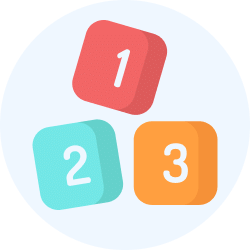Class 1 Exam > Class 1 Notes > General Knowledge for Young Learners > Worksheet: Different types of Measures
Worksheet: Different types of Measures | General Knowledge for Young Learners - Class 1 PDF Download
Section A: Fill in the Blanks
Q1: The unit of length used to measure small distances is __________.
Q2: The unit of length used to measure longer distances is __________.
Q3: The unit of weight used to measure heavier objects is __________.
Q4: The unit of weight used to measure lighter objects is __________.
Q5: The unit of capacity used to measure the volume of liquids is __________.
Section B: Match the Column

Section C: True or False
Q1: The unit of length used to measure the height of a mountain is centimeter.
Q2: The unit of weight used to measure the weight of a feather is gram.
Q3: The unit of capacity used to measure the amount of milk in a glass is milliliter.
Q4: The unit of volume used to measure the capacity of a swimming pool is liter.
Q5: The unit of length used to measure the width of a pencil is meter.
The document Worksheet: Different types of Measures | General Knowledge for Young Learners - Class 1 is a part of the Class 1 Course General Knowledge for Young Learners.
All you need of Class 1 at this link: Class 1
|
51 videos|98 docs|37 tests
|
|
51 videos|98 docs|37 tests
|
Download as PDF

|
Explore Courses for Class 1 exam
|

|
Signup for Free!
Signup to see your scores go up within 7 days! Learn & Practice with 1000+ FREE Notes, Videos & Tests.
Related Searches

















